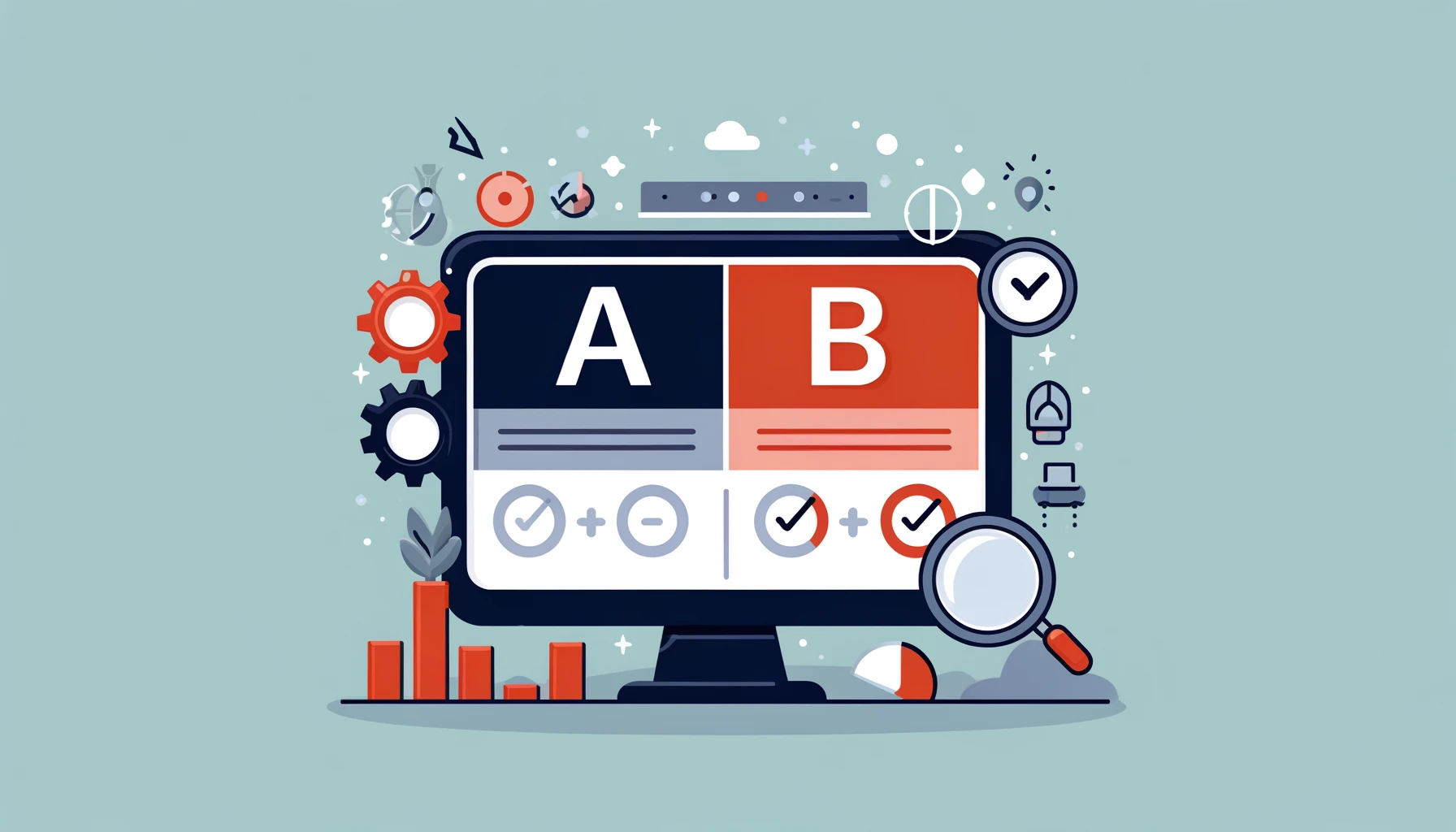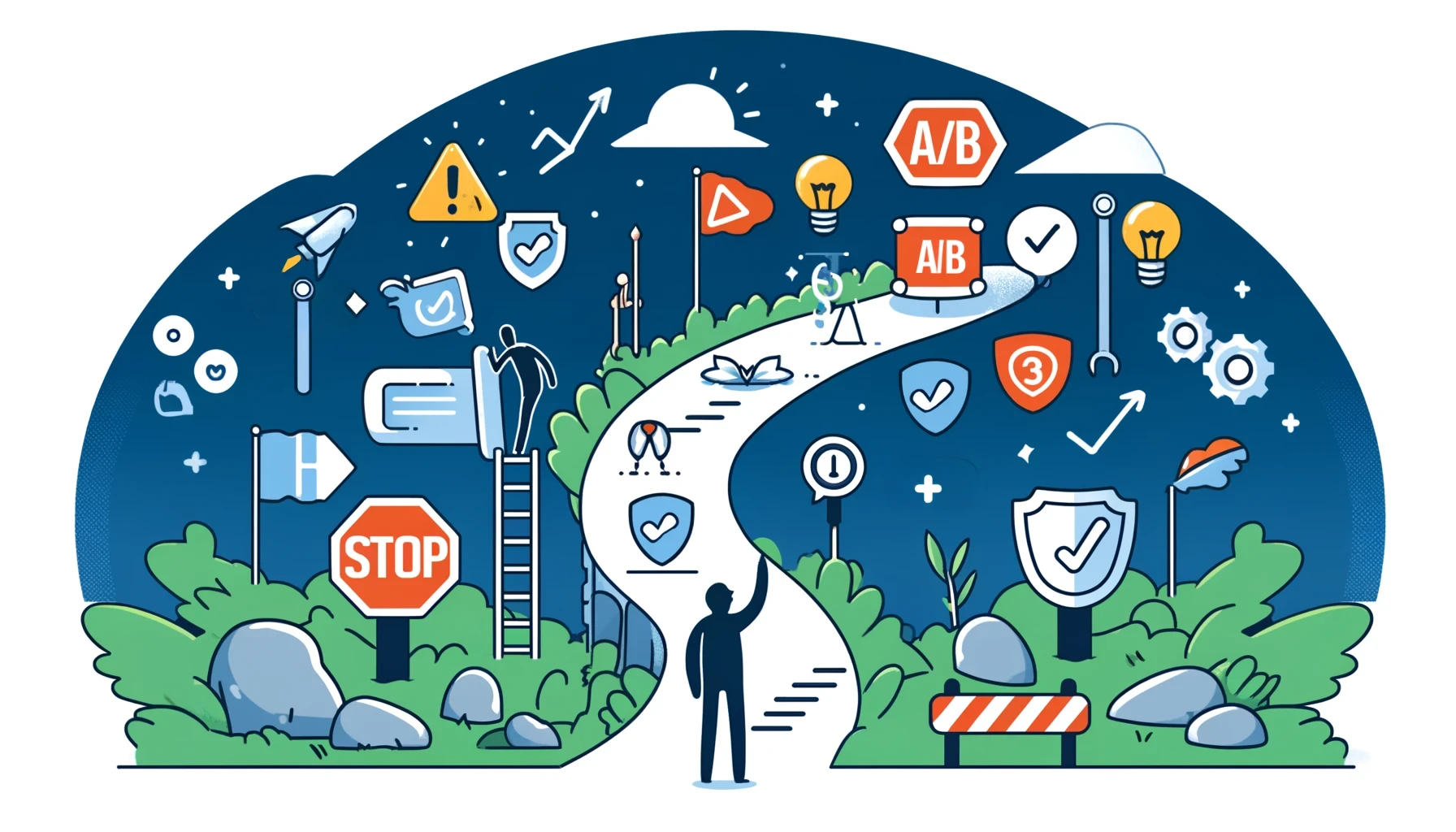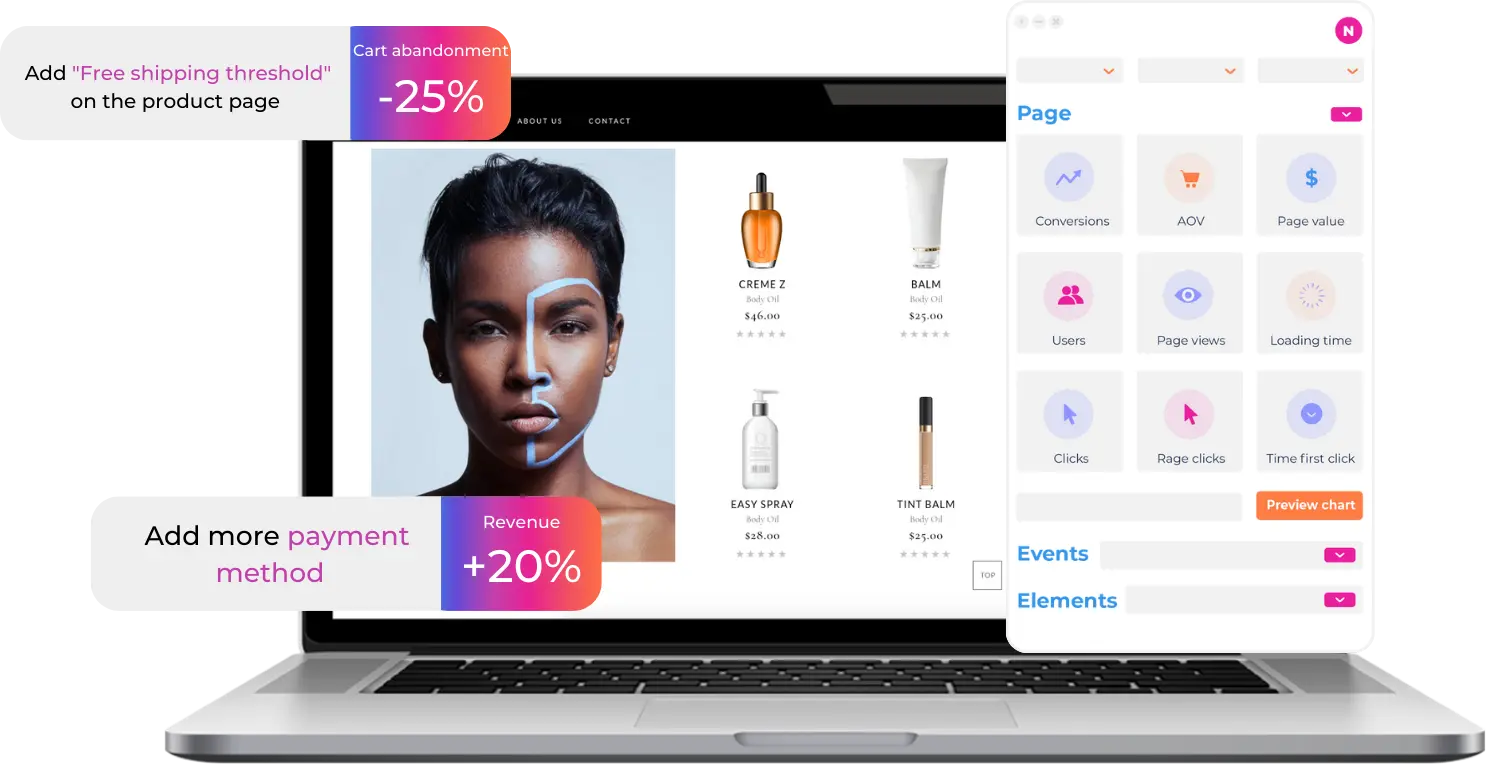A/B Testing Best Practices - Essential Tips for Optimizing Your Experiments
Introduction
In today's digital landscape, where customer expectations are ever-evolving, businesses must continually adapt their marketing strategies to stay ahead of the curve. Enter A/B testing, a powerful tool that empowers marketers to make data-driven decisions and optimize their campaigns for maximum impact. By systematically comparing two or more variations of a webpage, email, or advertisement, A/B testing provides invaluable insights into customer preferences and behavior, allowing businesses to fine-tune their approach and deliver tailored experiences that resonate with their target audience.
Understanding the Fundamentals of A/B Testing
A/B testing, also known as split testing, is a methodology that involves presenting two or more variations of a marketing asset (such as a website page, email campaign, or advertisement) to different segments of your target audience. The goal is to determine which variation performs better based on predefined metrics, such as click-through rates, conversion rates, or engagement levels.
At its core, A/B testing is a scientific approach to marketing optimization. By isolating and testing specific elements (e.g., headlines, images, calls-to-action), businesses can identify the factors that drive customer engagement and make informed decisions about which variations to implement permanently.
The Evolution of A/B Testing
While the concept of A/B testing has been around for decades, its application in the digital realm has gained significant traction in recent years. Early pioneers like Claude Hopkins, the author of "Scientific Advertising," laid the groundwork for modern A/B testing practices by advocating for data-driven decision-making in advertising campaigns.
However, it wasn't until the advent of the internet and the rise of online marketing that A/B testing truly came into its own. Companies like Google and Amazon were among the first to embrace A/B testing as a means of optimizing their online experiences, paving the way for its widespread adoption across various industries.
Today, A/B testing is an essential component of any successful digital marketing strategy, enabling businesses to continuously refine and enhance their customer experiences based on real-time data and insights.
The Benefits of Embracing A/B Testing
Implementing an effective A/B testing strategy can yield numerous benefits for businesses, including:
1. Improved Conversion Rates
By systematically testing and optimizing elements that influence customer behavior, such as call-to-action buttons, product descriptions, or checkout processes, businesses can increase the likelihood of visitors taking desired actions, whether it's making a purchase, subscribing to a newsletter, or filling out a contact form.
2. Enhanced Customer Experiences
A/B testing allows businesses to tailor their marketing assets to meet the specific needs and preferences of their target audience. By identifying and implementing the variations that resonate most with customers, businesses can deliver more engaging and personalized experiences, fostering stronger brand loyalty and customer satisfaction.
3. Data-Driven Decision-Making
Rather than relying on intuition or assumptions, A/B testing provides businesses with concrete data and insights to inform their marketing decisions. This data-driven approach minimizes the risk of costly mistakes and ensures that resources are allocated effectively towards strategies and tactics that have been proven to deliver results.
4. Continuous Improvement
A/B testing is an ongoing process that enables businesses to continuously refine and optimize their marketing efforts. By regularly testing and iterating, businesses can stay ahead of evolving customer preferences and market trends, ensuring that their marketing strategies remain relevant and effective.
Laying the Groundwork: Preparing for Successful A/B Testing
 Before diving into the intricacies of A/B testing, it's crucial to establish a solid foundation by addressing the following key considerations:
Before diving into the intricacies of A/B testing, it's crucial to establish a solid foundation by addressing the following key considerations:
1. Defining Objectives and Key Performance Indicators (KPIs)
Clearly articulating the goals and objectives of your A/B testing efforts is essential for measuring success and making informed decisions. Identify the specific metrics or Key Performance Indicators (KPIs) that align with your business objectives, such as increasing website traffic, boosting conversion rates, or improving customer engagement.
2. Selecting the Right Testing Tools
There are numerous A/B testing tools available, ranging from free and open-source solutions to enterprise-level platforms. Evaluate your specific needs and choose a tool that offers the features and capabilities required to execute your testing strategy effectively. Popular options include Optimizely, VWO, Google Optimize, and Adobe Target.
3. Establishing a Testing Hypothesis
Before launching an A/B test, it's crucial to formulate a testable hypothesis. This hypothesis should be based on data-driven assumptions or customer insights and should clearly outline the expected outcome of the test. A well-defined hypothesis not only guides the testing process but also helps in interpreting and analyzing the results.
4. Determining Sample Size and Test Duration
Ensuring statistical significance is paramount in A/B testing. To achieve reliable results, you must determine an appropriate sample size and test duration. Sample size calculators and statistical significance tools can assist in this process, helping you identify the minimum number of participants and the required test duration to obtain statistically significant results.
5. Implementing Tracking and Reporting Mechanisms
Effective A/B testing relies on accurate data collection and analysis. Implement robust tracking mechanisms to capture user interactions and behavior, and establish reporting procedures to monitor test progress and analyze results. Integrating your A/B testing tool with web analytics platforms, such as Google Analytics, can streamline this process.
Crafting Effective A/B Test Variations
Once you've laid the groundwork, it's time to dive into the heart of A/B testing: creating and implementing variations of your marketing assets. Here are some best practices to keep in mind:
1. Identify Testable Elements
Determine the specific elements of your marketing assets that you want to test. These can include headlines, images, calls-to-action, copy, layout, or any other aspect that may influence user behavior and engagement. Prioritize elements that are likely to have a significant impact on your defined KPIs.
2. Follow the "One Element at a Time" Rule
When creating variations for your A/B tests, it's crucial to follow the "one element at a time" rule. By isolating and testing a single element at a time, you can accurately attribute any observed changes in performance to that specific element, ensuring the validity and reliability of your test results.
3. Develop Compelling Variations
Crafting compelling variations is an art form in itself. Leverage user research, customer feedback, and industry best practices to develop variations that are likely to resonate with your target audience. Consider testing different messaging strategies, design approaches, or value propositions to identify the most effective combinations.
4. Ensure Consistency and Control
While creating variations, it's essential to maintain consistency in all other aspects of the marketing asset being tested. This includes factors such as branding, layout, and overall user experience. By keeping everything else constant, you can isolate the impact of the tested element and ensure the validity of your test results.
5. Test Multiple Variations (Multivariate Testing)
In some cases, testing multiple variations simultaneously may be beneficial, especially when evaluating the combined impact of several elements. This approach, known as multivariate testing, allows you to explore a wider range of possibilities and identify the optimal combination of elements for maximum effectiveness.
Executing A/B Tests: Best Practices and Considerations
 Once you've defined your test variations, it's time to execute your A/B tests. Here are some best practices and considerations to keep in mind:
Once you've defined your test variations, it's time to execute your A/B tests. Here are some best practices and considerations to keep in mind:
1. Randomize and Split Traffic Evenly
To ensure the validity of your test results, it's crucial to randomly assign visitors to each variation and split traffic evenly across all variations. This eliminates any potential biases or external factors that could skew the results and ensures that each variation is tested under similar conditions.
2. Avoid Cloaking and Deceptive Practices
Cloaking, or presenting different content to search engines and users, is considered a deceptive practice and can potentially harm your search engine rankings. Ensure that your A/B testing methodology adheres to ethical practices and provides a consistent experience to all visitors, regardless of their assigned variation.
3. Utilize Canonical Tags and Temporary Redirects
When testing variations with different URLs, it's recommended to use canonical tags and temporary redirects (302 redirects) to avoid potential duplicate content issues and maintain the integrity of your primary website or landing page. This approach ensures that search engines understand the relationship between the variations and the original content, preventing any negative impact on your search engine optimization (SEO) efforts.
4. Monitor and Analyze Results in Real-Time
Leverage the reporting and analytics capabilities of your A/B testing tool to monitor test progress and analyze results in real-time. This allows you to make informed decisions promptly and adjust your testing strategy as needed, maximizing the effectiveness of your campaigns.
5. Gather Qualitative Feedback
While quantitative data provides valuable insights, it's also essential to gather qualitative feedback from your users. Implement mechanisms such as surveys, user interviews, or feedback forms to gain a deeper understanding of user motivations, pain points, and preferences. This qualitative data can complement your A/B testing results and inform future iterations and optimizations.
6. Interpret Results with Statistical Significance
Interpreting A/B test results requires a thorough understanding of statistical significance. Utilize statistical significance calculators or consult with data analysts to ensure that your test results are statistically significant and not influenced by random variations or chance occurrences.
7. Implement Winning Variations and Iterate
Once you've identified the winning variation based on your test results and statistical significance, it's time to implement that variation across your marketing assets. However, the process of optimization doesn't stop there. Continuously iterate and test new variations, leveraging the insights gained from previous tests to further refine and enhance your marketing strategies.
Advanced A/B Testing Techniques
As you gain experience with A/B testing, consider exploring advanced techniques to take your optimization efforts to the next level:
1. Multivariate Testing
Multivariate testing is an extension of A/B testing that allows you to test multiple elements simultaneously, exploring the combined impact of various factors on user behavior and engagement. This technique is particularly useful when evaluating complex interactions between different elements or when seeking to identify the optimal combination of multiple variables.
2. Personalization and Segmentation
Personalization and segmentation are powerful strategies that can be combined with A/B testing to deliver tailored experiences to specific user groups or segments. By leveraging user data, such as demographics, behavior patterns, or purchase history, you can create targeted variations and test their effectiveness across different audience segments.
3. Machine Learning and Artificial Intelligence
The integration of machine learning and artificial intelligence (AI) algorithms with A/B testing tools is gaining traction. These advanced technologies can analyze vast amounts of data, identify patterns and insights, and automatically optimize marketing assets in real-time, accelerating the testing and optimization process.
4. Continuous Experimentation and Optimization
As businesses strive to stay ahead of evolving customer preferences and market trends, the concept of continuous experimentation and optimization is gaining momentum. This approach involves embedding A/B testing into the core of your marketing strategy, fostering a culture of data-driven decision-making and continuous improvement.
Overcoming Challenges and Pitfalls
 While A/B testing offers numerous benefits, it's important to be aware of potential challenges and pitfalls that can arise during the testing process:
While A/B testing offers numerous benefits, it's important to be aware of potential challenges and pitfalls that can arise during the testing process:
1. Ensuring Data Quality and Integrity
Inaccurate or incomplete data can lead to flawed test results and incorrect conclusions. Implement robust data validation processes, regularly audit your data sources, and ensure that your tracking mechanisms are functioning correctly to maintain data quality and integrity.
2. Avoiding Biases and Confounding Factors
Biases and confounding factors can skew test results and lead to incorrect interpretations. Be mindful of potential biases, such as selection bias, confirmation bias, or survivorship bias, and take steps to mitigate their impact on your testing processes.
3. Managing Test Duration and Sample Size
Determining the appropriate test duration and sample size is crucial for obtaining statistically significant results. Insufficient test durations or sample sizes can lead to inconclusive or unreliable results, while excessively long test durations can delay decision-making and implementation.
4. Balancing Testing and User Experience
While A/B testing is a powerful optimization tool, it's important to strike a balance between testing and providing a consistent and seamless user experience. Excessive testing or frequent changes can potentially confuse or frustrate users, leading to negative brand perceptions and decreased engagement.
5. Scaling and Integrating A/B Testing Efforts
As your A/B testing efforts grow in scope and complexity, scaling and integrating your testing processes across different marketing channels and platforms can become challenging. Establish standardized processes, leverage automation tools, and foster cross-functional collaboration to ensure consistent and efficient testing practices across your organization.
Embracing a Culture of Continuous Improvement
Successful A/B testing is not a one-time endeavor but rather a continuous journey of optimization and improvement. To fully harness the power of A/B testing, it's essential to foster a culture of data-driven decision-making and continuous experimentation within your organization.
1. Encourage Cross-Functional Collaboration
A/B testing efforts should not be siloed within a single department or team. Encourage cross-functional collaboration between marketing, product, design, and development teams to leverage diverse perspectives, share insights, and align testing efforts with broader organizational goals.
2. Invest in Training and Education
Provide ongoing training and education opportunities for your team members to enhance their understanding of A/B testing principles, best practices, and the latest industry trends. This investment will not only improve the effectiveness of your testing efforts but also foster a culture of continuous learning and innovation.
3. Celebrate Successes and Learn from Failures
Celebrate the successes achieved through A/B testing, but also embrace failures as learning opportunities. Encourage open discussions and retrospectives to analyze test results, identify areas for improvement, and iterate on your testing strategies.
4. Establish Clear Testing Processes and Governance
Develop clear processes and governance frameworks for A/B testing within your organization. Define roles and responsibilities, establish testing guidelines and protocols, and implement mechanisms for reviewing and approving test plans to ensure consistency and alignment with organizational objectives.
5. Leverage External Resources and Expertise
While building internal expertise is essential, don't hesitate to leverage external resources and expertise when needed. Engage with industry experts, attend conferences and workshops, and participate in online communities to stay up-to-date with the latest A/B testing trends, tools, and best practices.
Conclusion
In the ever-evolving landscape of digital marketing, A/B testing has emerged as a powerful tool for businesses to optimize their strategies, enhance customer experiences, and drive growth. By embracing a data-driven approach and following best practices, businesses can unlock the full potential of A/B testing and gain a competitive edge in their respective markets.
Remember, A/B testing is not a one-time exercise but rather a continuous journey of experimentation, learning, and improvement. Fostering a culture of data-driven decision-making and encouraging cross-functional collaboration will be key to sustaining the benefits of A/B testing over the long term.
As you embark on your A/B testing journey, remain open-minded, embrace challenges as opportunities for growth, and continuously iterate and refine your testing processes. With dedication and a commitment to continuous improvement, you can unlock the true power of data-driven marketing and deliver exceptional experiences that resonate with your target audience.
